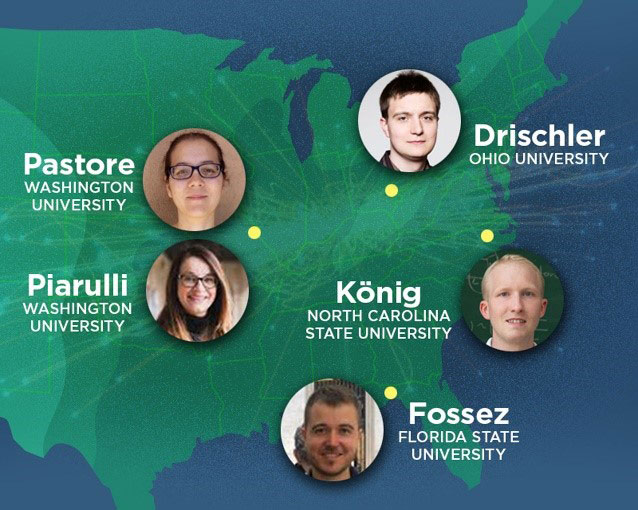FRIB Stimulates Theory Advancements through Bridge Program
FRIB Stimulates Theory Advancements through Bridge Program

The Science
The Facility for Rare Isotope Beams Theory Alliance (FRIB-TA) is a coalition of scientists from universities and national laboratories that fosters advancements in theory relevant to the scientific program at FRIB, a user facility for the U.S. Department of Energy Office of Science (DOE-SC). FRIB-TA established a theory bridge program to create more permanent positions in nuclear theory across the U.S. The program selects partner institutions and relies on DOE covering 50% of the cost through FRIB-TA and the home institution covering 50% until the faculty or staff member is granted tenure over a maximum period of six years. Bridge faculty and staff are outstanding young theorists who develop exceptional theoretical research relevant to rare isotope science.
Saori Pastore and Maria Piarulli were the first FRIB-TA bridge faculty hired into tenure-track positions at Washington University at St. Louis in 2018. Dr. Pastore’s research focuses on understanding the fundamental interactions in nature and their symmetries, with strong overlaps with the planned fundamental symmetries program at FRIB. Dr. Piarulli works on the formulation and implementation of realistic nuclear interactions and electroweak current with applications to nuclear structure and neutron stars. North Carolina State University was the second institution to participate in the FRIB-TA bridge program with the hire of Sebastian Konig in 2019. Dr. Koning’s research is centered around effective field theories applied to few-body systems, finite-volume techniques and other methods of ab initio calculations of nuclei. Florida State University next partnered with FRIB-TA and brought in Kevin Fossez in 2021. Dr. Fossez explores the most exotic nuclei ever created and works on unifying nuclear structure and reactions. This year, Ohio University conducted a bridge faculty search and hired Christian Drischler, who applies chiral effective field theory and many-body theory to derive microscopic constraints to neutron stars.
Dr. Pastore was recently promoted to associate professor. She was also elected to the FRIB-TA director line. Dr. Piarulli and Dr. Koning are recipients of the DOE Early Career Award and the National Science Foundation (NSF) Early Career Development (CAREER) Award, respectively.
The Impact
FRIB-TA bridge faculty have a major impact on the science program of FRIB but also contribute to related fields such as machine learning, quantum information science, high energy physics, neutrino physics, and gravitational wave physics.
Summary
The goal of the FRIB Theory Bridge program is to enhance the opportunities for early career theorists as faculty at universities or staff scientists at National Laboratories. Currently, FRIB-TA has five faculty under its bridge program. The bridge faculty have been successful in establishing their research groups and progressing in their careers. This development is particularly exciting in the same year that FRIB begins operations to further nuclear physics.
Contact
Filomena Nunes
FRIB
nunes@frib.msu.edu
Funding
FRIB-TA is supported by DOE, Office of Science, Office of Nuclear Physics.




